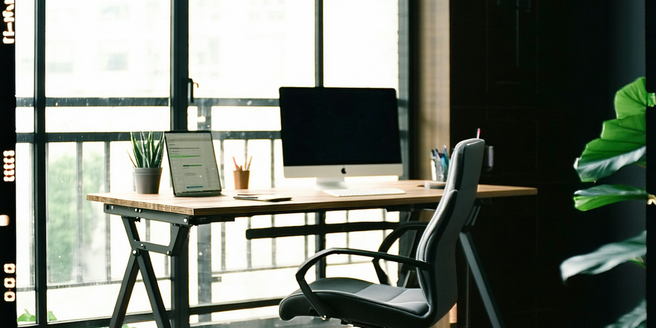
Digital Detox Techniques
Understanding the need for a digital detox is crucial in today's technology-driven world. Constant digital interactions can harm mental and physical well-being, causing stress, anxiety, and reduced productivity. Recognizing signs of digital overload, such as exhaustion and sleep disturbances, is the first step toward improvement. Creating a personal digital detox plan helps balance technology use through realistic goals and offline activities. Implementing screen-free zones and times promotes focus, better sleep, and meaningful connections. Engaging in offline activities like outdoor hobbies or creative pursuits enhances relaxation and mental health, fostering a wholesome balance between technology and life experiences. These strategies contribute to a healthier, more mindful approach to digital consumption, encouraging individuals to disconnect from devices and reconnect with the world around them.

Cloud Gaming And User Experience
Cloud gaming is transforming the gaming industry by enabling users to enjoy high-end games on various devices without the need for expensive hardware. By processing games on remote servers and streaming them directly to devices, cloud gaming offers a convenient and streamlined experience without physical installations or updates. It enhances accessibility by eliminating the need for frequent hardware upgrades, offering subscription models, and supporting cross-platform play, thereby fostering an inclusive gaming community. Latency is a crucial factor in cloud gaming, impacting responsiveness and performance, but advancements in technology aim to reduce these delays. Cloud gaming also leverages powerful remote servers to deliver high-quality graphics, with ongoing improvements in streaming and compression technologies enhancing visual fidelity. Future trends in cloud gaming include personalized experiences through AI, reduced latency with 5G networks, and immersive experiences via VR and AR, suggesting an increasingly interconnected and accessible gaming future.

Workstation Personalization
Personalizing your workstation can transform your work environment into an inspiring and comfortable space, enhancing motivation and productivity. Adding personal elements like soothing color schemes, artwork, or plants can reduce stress and improve mood. Choosing the right desk and chair is crucial for creating an ergonomic workspace, with adjustable options promoting circulation and reducing fatigue. Organize your layout for optimal productivity by keeping tools within reach and ensuring good lighting to reduce eye strain. Ergonomic accessories, such as wrist rests and monitor stands, prevent injury and improve posture, boosting focus and efficiency. Decorate with personal touches like photos and motivational quotes for inspiration, while maintaining a clutter-free environment to stay focused and efficient. Overall, a personalized and well-organized workstation supports your best work habits and enhances your work experience.

Video Tools For Creative Teamwork
Understanding the role of video in team collaboration highlights its importance in enhancing communication and team bonding, especially in remote work environments. Video enables real-time discussions, screen sharing, and idea visualization, which written communication lacks. It serves as a tool for documenting meetings and making key discussions easily reviewable. Video reduces misunderstandings and builds trust, encouraging active participation. For creative teams, video editing tools like Adobe Premiere Pro and Final Cut Pro are crucial for producing captivating content and achieving effective communication. Platforms like Frame.io facilitate real-time collaboration and feedback. Video conferencing has transformed communication, enabling global connectivity without geographical constraints. Platforms such as Zoom and Microsoft Teams offer features that improve virtual meetings, promoting inclusivity and efficient communication. Interactive video platforms like Kaltura and Wistia allow creative teams to engage audiences through immersive content, boosting retention and interaction. Efficient sharing and storage solutions like Dropbox and Google Drive ensure seamless collaboration with secure, accessible cloud options, safeguarding against data loss.

Smart Thermostat Benefits
Smart thermostats deliver substantial energy efficiency and cost savings by optimizing energy use based on occupancy patterns, reducing heating and cooling waste. Featuring an intuitive interface, they provide real-time energy usage reports and suggest optimal settings for savings, helping recoup the initial investment through lower energy bills. These devices enhance comfort and convenience with personalized temperature settings and remote control via smartphone apps, ensuring a comfortable environment at any time. Integration with smart home devices like Amazon Alexa and Google Home allows for customized automation, improving overall home efficiency. Remote access features enable on-the-go climate adjustments and customized schedules to minimize energy waste. Smart thermostats also support environmental sustainability by reducing the carbon footprint and promoting energy conservation, aligning with renewable energy systems for a sustainable future.

Wearable Devices For Sleep Tracking
Understanding the various stages of sleep—light sleep, deep sleep, and REM sleep—is crucial for maintaining good sleep quality and overall health. Wearable devices track these stages using sensors to monitor movement, heart rate, and occasionally blood oxygen levels. This data helps users gain insights into their sleep habits and make necessary adjustments for better rest. When selecting a sleep-tracking wearable, consider features like accuracy in tracking sleep stages, battery life, comfort, and user-friendly apps for data analysis. Popular devices such as the Fitbit Charge 4, Oura Ring, and Apple Watch offer comprehensive sleep tracking and other health-monitoring functions. These wearables empower users with data-driven insights, enabling them to enhance their sleep quality and overall wellbeing.

Portable Laptop Stands To Enhance Ergonomics
Understanding and implementing ergonomics in the workplace is vital for enhancing employee health and productivity. Ergonomics involves designing workspaces that minimize physical strain, thereby reducing the risk of musculoskeletal disorders and improving job performance. Critical factors include proper chair support, adjustable desks, and correctly positioned equipment. Educating employees on these principles can lead to reduced absenteeism and higher job satisfaction. Portable laptop stands are invaluable for maintaining ergonomic practices on the go, promoting better posture and preventing overheating. Key features to look for in a stand include stability, adjustability, non-slip surfaces, and ventilation. Different types of stands cater to various needs, with options like folding, adjustable, and riser stands available. Proper setup of a laptop stand involves ensuring stability, adjusting height and angle for optimal posture, and maintaining an appropriate screen distance to minimize strain, thereby maximizing ergonomic benefits and boosting productivity.

Ergonomic Chairs For Home Office
Enhance your home office with ergonomic furniture to boost health and productivity. Ergonomics helps reduce body strain, improve posture, and increase work efficiency. Regular workspace reassessment ensures continued ergonomic benefits, adapting to changing needs. Investing in high-quality ergonomic products not only provides comfort but also enhances the aesthetics of your office. Prioritize your long-term well-being, productivity, and health by incorporating ergonomic solutions into your home office. Key features to consider in an ergonomic chair include adjustability, lumbar support, and comfort for optimal performance.

Biometric Sensors In Wearables
Biometric sensors are revolutionizing modern technology by enabling seamless interaction between humans and devices through the analysis of physiological and behavioral traits. These advancements are enhancing wearable devices by offering personalized insights, improved safety, and security. The evolution of wearable technology has transitioned from basic fitness tracking to comprehensive health monitoring, thanks to biometric sensors. Key sensor types in wearables include optical sensors, accelerometers, and ECG monitors, which together provide comprehensive data on physical and emotional states. Despite the benefits, challenges like data accuracy, privacy concerns, and battery life remain. However, the future is promising with potential advancements in healthcare and integrated smart systems through innovations in sensors and AI-driven analytics.

Smart Home Integration
Smart home technology revolutionizes our interaction with living spaces by integrating advanced systems that enhance efficiency, cost-effectiveness, and sustainability. Featuring automated lighting, climate control, and security solutions, smart homes use interconnected devices that communicate over networks, often via Wi-Fi, for centralized control through a single application. Users can operate appliances remotely, set schedules, and monitor energy usage, gaining valuable insights for informed decision-making. Selecting the right smart devices involves identifying needs, ensuring compatibility, and choosing user-friendly options with reliable support. Establishing a central hub ensures seamless device management via a unified interface, promoting energy efficiency and security. Ensuring device compatibility through adherence to industry standards prevents connectivity issues and supports a cohesive ecosystem. Enhancing smart home security requires strong, unique network passwords, two-factor authentication, and regular firmware updates to protect against cyber threats. Through these strategies, smart home technology delivers convenience, innovation, and peace of mind.

Digital Identity In Cybersecurity
Digital identity in the modern age is crucial for secure interactions in an interconnected world. It involves attributes like authentication and authorization, essential for protecting against unauthorized access and fraud. A robust digital identity system enhances cybersecurity by verifying user legitimacy and embedding security protocols, reducing breach risks. Digital identities consist of components such as usernames and biometric data, and come in types like federated, self-sovereign, and centralized. Managing digital identities poses challenges, including privacy risks and the complexity of multiple identities. Best practices for securing them include strong passwords, MFA, and identity management solutions. Future trends, like decentralized identity solutions and AI integration, promise enhanced privacy and security.
